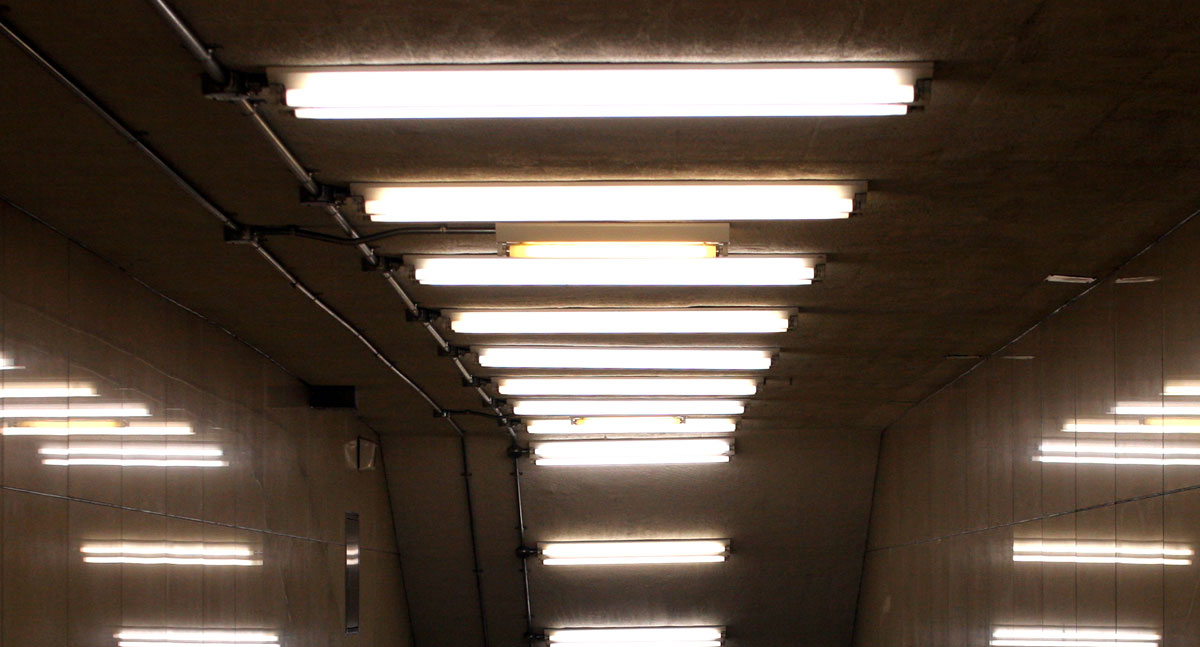A common question we get asked is, why does touching a fluorescent light sometimes make it work? The answer lies in the special technology of fluorescent lights. When you touch a fluorescent light, you complete an electrical circuit, allowing electricity to flow from one end of the bulb to the other. This creates a spark that ignites the gas inside and causes it to glow brightly. So, when you turn off your fluorescent light switch and then touch it, you are essentially giving it the final spark of electricity it needs to come on.
Loose contacts are definitely another possibility when it comes to why your fluorescent light only comes on when you touch it. You may have an old fixture, or the connections may just be loose from age or wear and tear. If this is the case, you should contact a professional electrician for help–they will be able to diagnose and fix any issues with your electrical system or install new lights if needed.
Another reason why touching fluorescent tubes can get them to work is the transfer of static charge to the tube that kicks off the arc. Fluorescent tubes are a type of Arc tube, meaning, when an electrical current runs through the filaments of a fluorescent tube, it ionizes the mercury vapour inside and creates UV light. Though the ballast provides enough potential energy to sustain the arc, it’s not reasonably sufficient to strike it. To initiate the arc, a small amount of radiation is needed. This can come from sources like background radiation or other bursts of energy. If one of the light bulbs isn’t working, try touching it. This will introduce a new potential power source and might get it started again.
In layman’s terms, there is mercury in the phosphor coating which ionizes and creates an arc when you touch it, thus lighting up the tube.
The science behind why touching or hitting a fluorescent light sometimes makes it work
Have you ever experienced the frustration of getting a stubborn fluorescent light to work, only to have it switch on after you hit or touch it? It may sound like sorcery, but there’s a scientific explanation for what’s going on.
When a fluorescent light is powered on, but not functioning properly, the issue often lies within the electricity supply. As electricity passes through the tube, it has to jump a distance between two electrodes at either end of the tube. If there is an insulation fault or gap between those two electrodes, then current can’t pass through and illuminate the bulb. Strikes and touches applied directly to the glass tube – or even nearby metal components – can temporarily increase the electric field strength in that area, allowing an electrical arc bridge to form over that gap which allows current flow and causes the bulb to light up momentarily. This explains why sudden touching or hitting of a fluorescent light can sometimes make them spring back into life!
While this is usually a temporary fix requiring more thorough maintenance of the wiring by qualified electricians, it does help you to at least understand what is going on.
Does touching or leaving fingerprints on fluorescent tubes reduce their lifespan?
No, a fingerprint won’t cause a problem on a fluorescent tube.
Halogen lamp bulbs may not last as long if they have fingerprints on them because the grease can etch the fused quartz envelope. Although most new halogen bulbs come with hard glass that is resistant to grease, it’s still advisable to handle them cautiously. A little wipe-down with a tissue should do the trick if they get accidentally contaminated.
How to troubleshoot a flickering fluorescent light
Flickering fluorescent lights can cause frustration, not to mention a potential safety hazard, but troubleshooting these problems doesn’t have to be complicated. Follow these steps:
- Start by unplugging the light fixture, and if possible, switch out the bulb. If the flickering persists, it might be time to check the ballast or the component of a lighting system that controls the current flow. If there is an issue with the ballast, you can try replacing it with a similar wattage and voltage.
- Make sure all your wiring connections are secure and free from damage – although any tampering should be done by electricians due to the risk of electric shock.
- Inspect for loose parts and signs of overheating on components like your starter switch.
Why you should never use physical force on a fluorescent light
Fluorescent lights are a common illumination source in many homes, offices and warehouses. Unfortunately, they can be expensive to replace and can be challenging to install correctly. As a result, some people think that striking or shaking a fluorescent light when it is not working will help get it back on again. However, using physical force on these lights can be highly damaging and should always be avoided. Doing so can cause internal components to move around and become dislodged, potentially resulting in short circuits or sparking.
If a fluorescent light is regularly subjected to physical force, then its lifespan may decrease dramatically or become unreliable even when used correctly. Even striking just once can damage the tubes and fittings inside the light fixture, making them more prone to failure in the future.
Therefore, instead of resorting to physical contact with your fluorescent light if it does not turn on properly, you should inspect the connection for signs of flickering or contact an experienced electrician for further advice. For safety’s sake, never use any physical force on a fluorescent light – it could prove disastrous!
Tips for maintaining your fluorescent lights so they last longer
Fluorescent lights are popular in many household and commercial spaces due to their low energy consumption and surprisingly long lifespans. However, these lights will not last forever – they will eventually need to be replaced.
To ensure your fluorescent lights last as long as possible, here are some helpful tips for maintaining them:
- Invest in high-quality bulbs that provide consistent brightness over the bulb’s life.
- Change the bulbs regularly before the light intensity begins to dwindle.
- Keep the fixtures clean – dirt and dust can reduce how much light enters a room and decrease lifespan.
- Avoid extreme temperature fluctuations since this can lead to premature burnout.
- An occasional checkup can go a long way – inspect panels and wiring for any signs of damage and replace parts if necessary.
While it may be tempting to solve a flickering fluorescent light problem with a quick hit or tap, this is the worst thing that you can do. Not only does it not work, but it also puts you at risk for electric shock. If you’re experiencing flickering from your fluorescent lights, first check to see if they need new bulbs. If that doesn’t fix the issue, then there could be a bigger problem with the ballast. In any case, it’s best to leave repairs and maintenance to the professionals. With some simple tips and regular care, you can extend the lifespan of your fluorescent lights and avoid costly repairs down the road.


